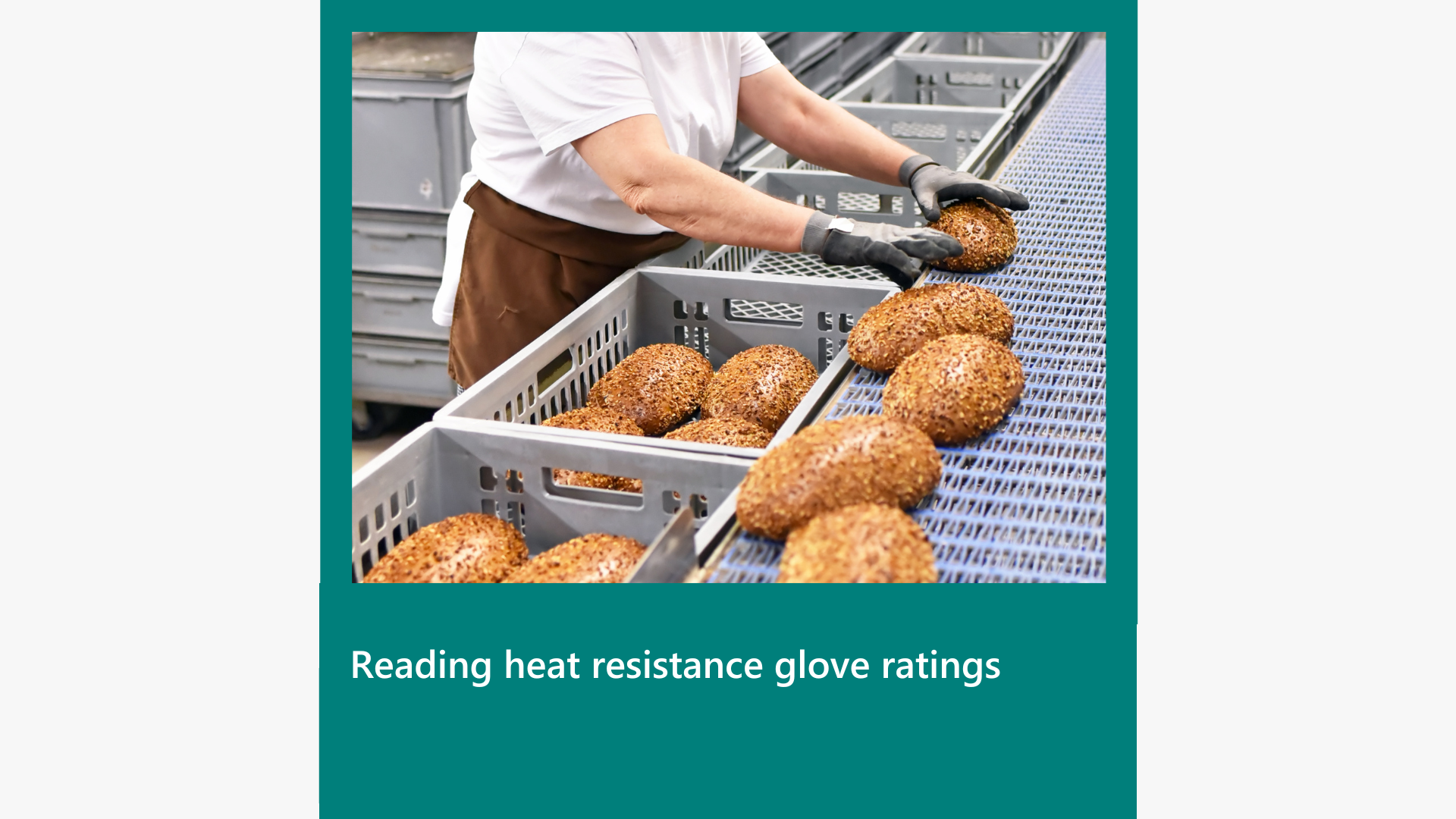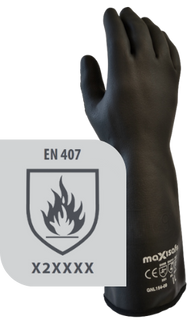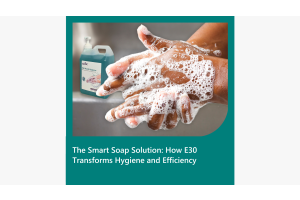Reading heat resistance glove ratings

Selecting the right protective gloves is crucial when working in environments with thermal hazards. In Australia, the standard governing gloves for thermal protection is AS/NZS 2161.4:1999, which aligns with the European EN 407 standard.
This standard evaluates gloves based on six specific thermal risks, each rated on a scale from 0 to 4, with higher numbers indicating better protection.
Each glove tested under this standard will display a pictogram followed by a six-digit code, with each digit representing the glove's performance level in the corresponding category.
For example, a glove marked with "41234X" indicates varying levels of protection across the six categories, with "X" signifying that the glove was not tested for the sixth category.
For instance, this multi-purpose Maxi-safe gauntlet glove, DGH-1154, is tested for contact heat resistance, the second performance category. Achieving a level 2 means this glove is suitable for handling hot objects up to 250° for up to 15 seconds. The 5 other X's indicate that the glove has not been tested in the other 5 performance categories.


Reading a heat resistance rating.
Take this multi-purpose Maxi-safe gauntlet glove, DGH-1154, which is tested for contact heat resistance, the second performance category.
Achieving a level 2 means this glove is suitable for handling hot objects up to 250° for up to 15 seconds. The other X's indicate that the glove has not been tested in the other 5 performance categories.
Conveniently, many protective gloves have their ratings printed directly onto the glove, as you can see on the cuff on this gauntlet glove. Alternatively, they are printed on labels, packaging, and can be obtained from your supplier.
Continue reading below to learn what each performance category tests for.
Here’s a breakdown of the 6 performance categories:
- Limited Flame Spread:
Measures how long the glove material continues to burn after being exposed to a flame. - Contact Heat Resistance:
Assesses the glove's ability to withstand direct contact with hot objects, ranging from 100°C to 500°C, for at least 15 seconds without melting or developing holes. - Convective Heat Resistance:
Evaluates how well the glove insulates against heat transferred through hot air or gas. - Radiant Heat Resistance:
Determines the glove's effectiveness in resisting heat from radiant sources, such as open flames or hot surfaces. - Resistance to Small Splashes of Molten Metal:
This test measures the glove's ability to withstand minor splashes of molten metal without damage. - Resistance to Large Splashes of Molten Metal:
Assess the glove's protection against significant exposures to molten metal.
Understanding these ratings is essential for selecting the appropriate glove for specific tasks, ensuring both safety and compliance with Australian standards.





